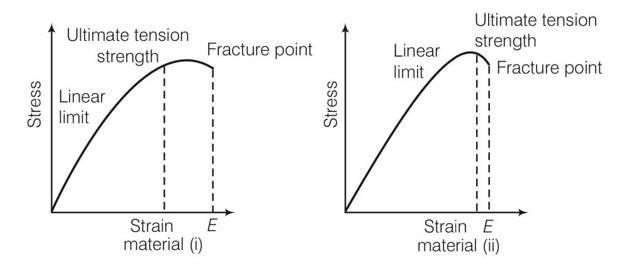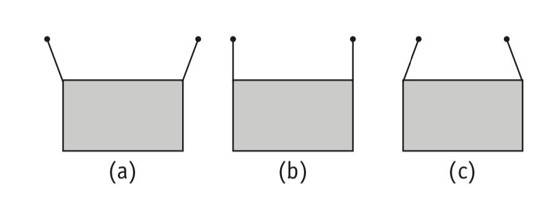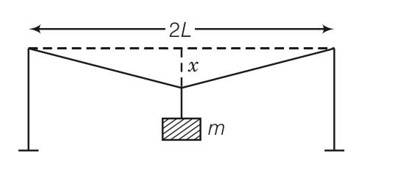physics ncert solutions class 11th
Get insights from 952 questions on physics ncert solutions class 11th, answered by students, alumni, and experts. You may also ask and answer any question you like about physics ncert solutions class 11th
Follow Ask QuestionQuestions
Discussions
Active Users
Followers
New question posted
4 months agoNew answer posted
4 months agoContributor-Level 10
This is a long answer type question as classified in NCERT Exemplar
(a) consider a horizontal parcel of air with cross section A and height dh
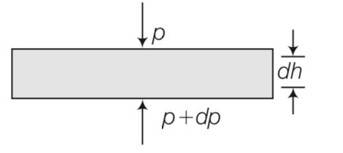
Let the pressure on the top surface and bottom surface be P and p+dp. If the parcel is in equilibrium , then the net upward force must be balanced by the weight
(P+dP)-PA=-
dP= -
negative sign shows that pressure decreases with height.
(b) let o be the density of air on the surface of earth.
As per question , pressure density
dP= -
In
P=Poe(- )
(c) as P =Po
in
p=1/10 Po
in( ) =-
in1/10 =-
h=- in1/10= - -1=
=
=
= 16 103m
(d) we know that
P , temperature remain
New answer posted
4 months agoContributor-Level 10
This is a multiple choice answer as classified in NCERT Exemplar
(a), (d) for steel wire Ysteel= stress/strain=
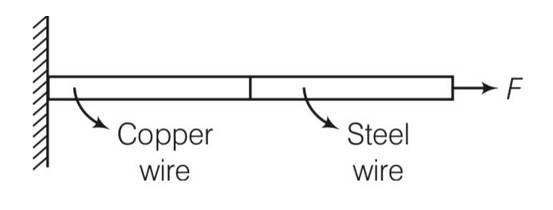
When F and A are same for both the wires . hence stress will be same for both the wire
(Strain)steel= stress/Ysteel and straincopper=stress/Ycopper
Ysteel Ycopper
hence they both have different starin
New answer posted
4 months agoContributor-Level 10
This is a multiple choice answer as classified in NCERT Exemplar
(a), (d) An ideal liquid is not compressible
Hence V=0
Bulk modulus B= strss /volumetric strain=
Compressibility K= 1/B=1/
As there is no tangential force exists. So shear strain =0
New answer posted
4 months agoContributor-Level 10
This is a multiple choice answer as classified in NCERT Exemplar
(b), (d) Let mass m is placed at x from the end B respectively.
TA and TB be the tensions in wire A and wire B respectively.
For the rotational equilibrium of the system,
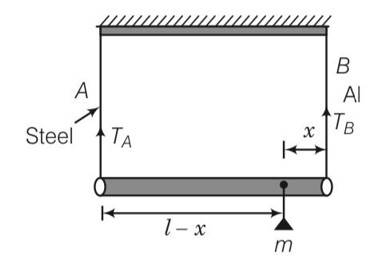
TBx-TA(l-x)=0
=
Stress in wire A = SA=
Stress in wire B = SB= where a are the area of wire
We know that aB=2aA
Now for equal stress
SA=SB
So
So x =l/3 and l-x= 2l/3
Hence mass m should placed to B.
For equal strain
StrainA= StrainB
After solving we get x= x= 10l/17
l-x=l=10l/17=7l/17
New answer posted
4 months agoContributor-Level 10
This is a multiple choice answer as classified in NCERT Exemplar
(a), (d) Forces at cross section is F.
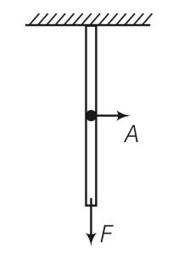
Now applying formula . stress = tension/area=F/A
Tension = applied force =F
New answer posted
4 months agoContributor-Level 10
This is a multiple choice answer as classified in NCERT Exemplar
(c), (d) The ultimate tensile strength for material ii is greater hence material ii is elastic over larger region as compared to material (i) for material (ii) fracture point is nearer, hence it is more brittle.
New answer posted
4 months agoContributor-Level 10
This is a multiple choice answer as classified in NCERT Exemplar
(d) a mass M is attached at the centre. As the mass is attached to both the rods, both rod will be elongated, but due to different elastic properties of material rubber changes shape also.
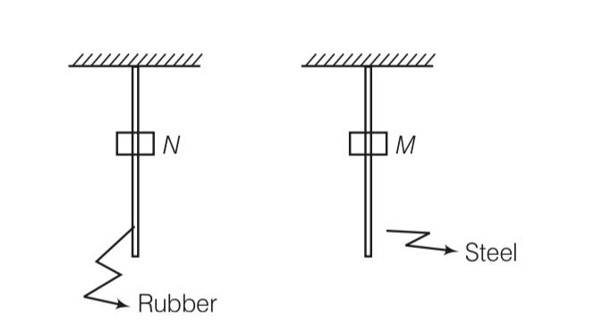
New answer posted
4 months agoContributor-Level 10
This is a multiple choice answer as classified in NCERT Exemplar
(c) 2Tsin -mg=0
2Tsin =mg
Total horizontal forces = Tcos
T=mg/2sin
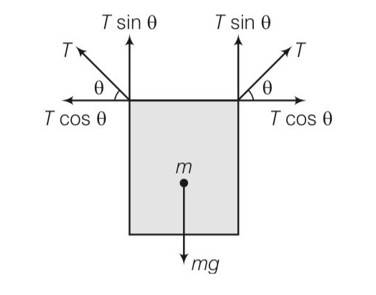
As mg is constant T
Tmax= mg/sin min
Sin min=0, min= 0
Tmin=mg/2sin max
max= 1, =900
New answer posted
4 months agoContributor-Level 10
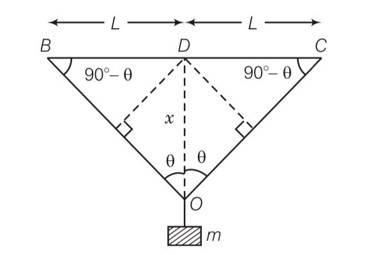
BO+OC- (BD+DC)
= 2BO -2BD
= 2 (BO-BD)
=2 [ (x2+L2)1/2-L]
=2L [ (1+ )1/2-L]
= 2L [ (1+ ]=
Strain =
Taking an Exam? Selecting a College?
Get authentic answers from experts, students and alumni that you won't find anywhere else
Sign Up on ShikshaOn Shiksha, get access to
- 65k Colleges
- 1.2k Exams
- 686k Reviews
- 1800k Answers

